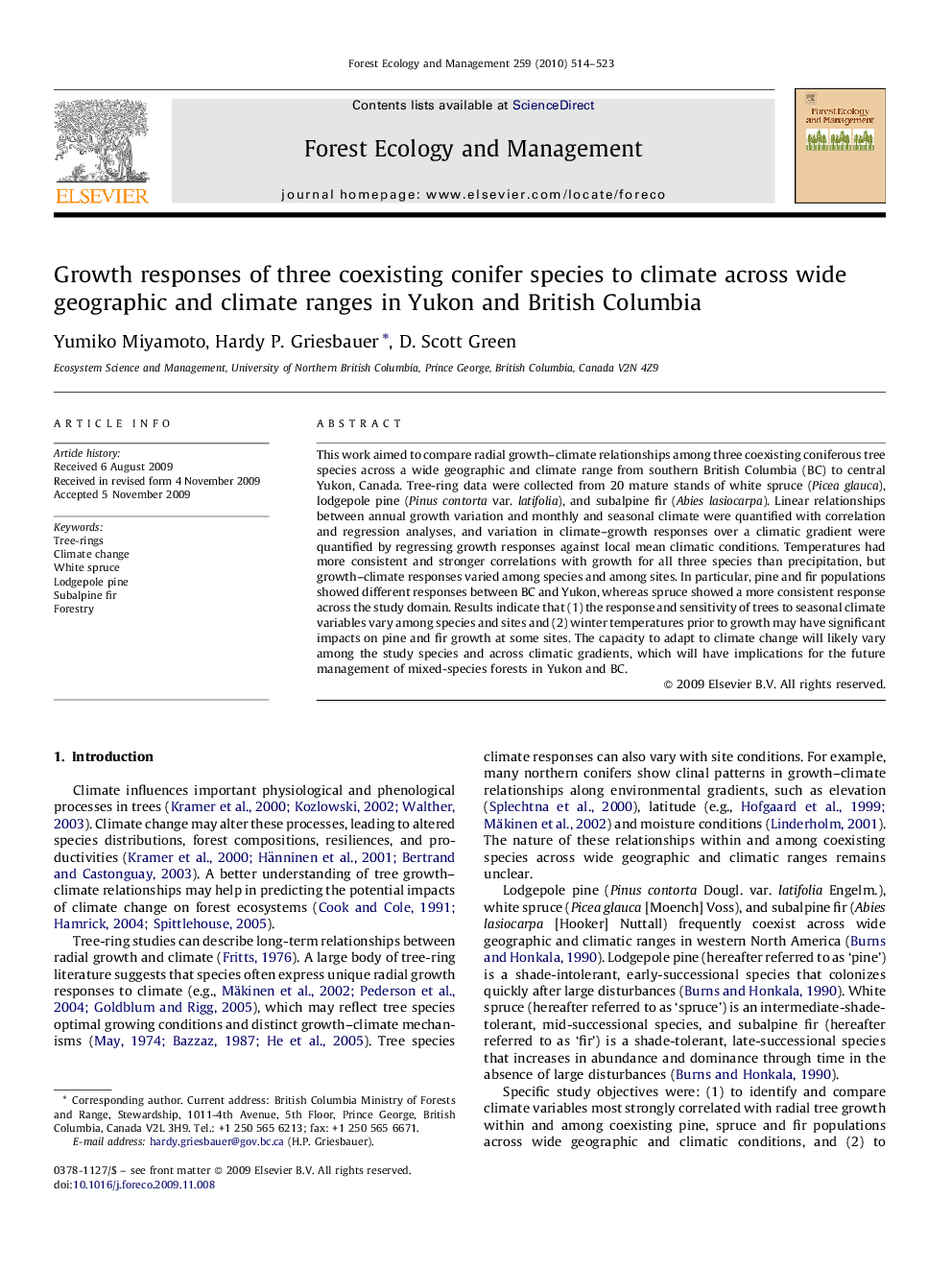| Article ID | Journal | Published Year | Pages | File Type |
|---|---|---|---|---|
| 10250589 | Forest Ecology and Management | 2010 | 10 Pages |
Abstract
This work aimed to compare radial growth-climate relationships among three coexisting coniferous tree species across a wide geographic and climate range from southern British Columbia (BC) to central Yukon, Canada. Tree-ring data were collected from 20 mature stands of white spruce (Picea glauca), lodgepole pine (Pinus contorta var. latifolia), and subalpine fir (Abies lasiocarpa). Linear relationships between annual growth variation and monthly and seasonal climate were quantified with correlation and regression analyses, and variation in climate-growth responses over a climatic gradient were quantified by regressing growth responses against local mean climatic conditions. Temperatures had more consistent and stronger correlations with growth for all three species than precipitation, but growth-climate responses varied among species and among sites. In particular, pine and fir populations showed different responses between BC and Yukon, whereas spruce showed a more consistent response across the study domain. Results indicate that (1) the response and sensitivity of trees to seasonal climate variables vary among species and sites and (2) winter temperatures prior to growth may have significant impacts on pine and fir growth at some sites. The capacity to adapt to climate change will likely vary among the study species and across climatic gradients, which will have implications for the future management of mixed-species forests in Yukon and BC.
Related Topics
Life Sciences
Agricultural and Biological Sciences
Ecology, Evolution, Behavior and Systematics
Authors
Yumiko Miyamoto, Hardy P. Griesbauer, D. Scott Green,
